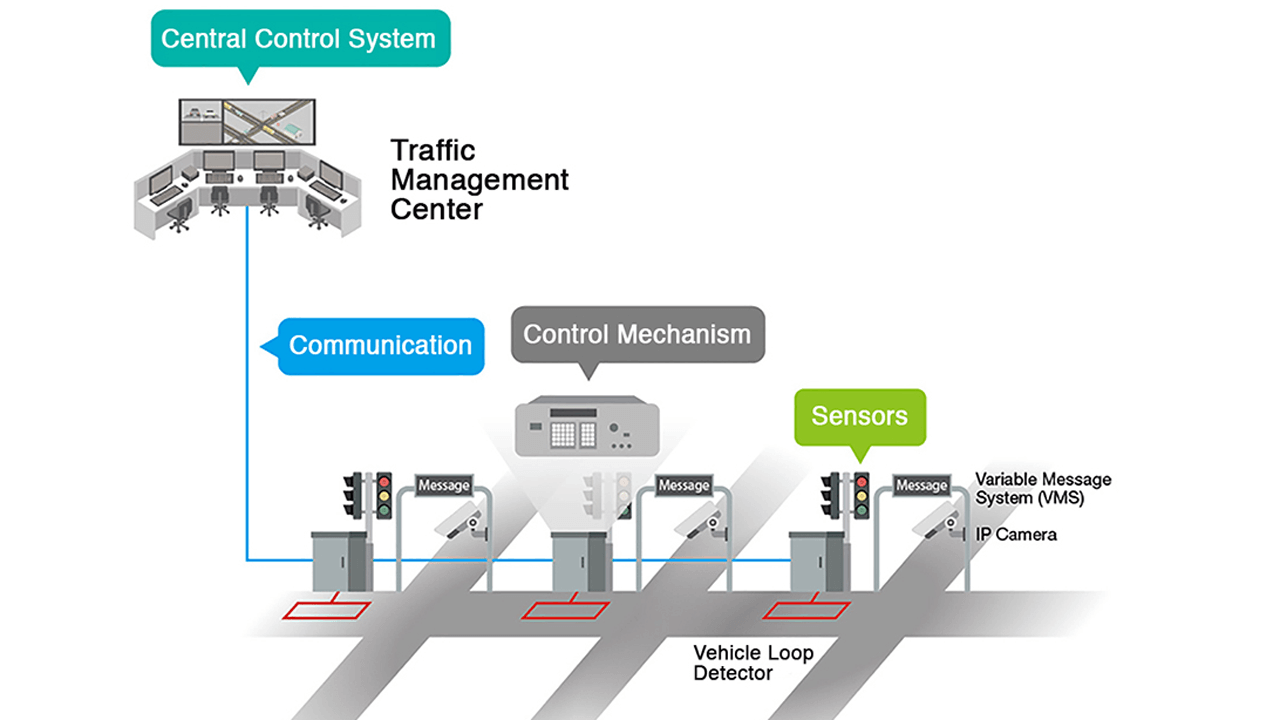ApplicationsJanuary 22, 2022
Advanced traffic management using secure data acquisition

Before revamping an existing traffic management systems, ask three questions to guide the design and implementation. Effective traffic management systems leverage cutting-edge analytics, made possible by vast amounts of high-quality data that was collected by various sensors.
As traffic congestion continues to increase and take a heavy toll on existing infrastructure, commuting times, and the environment, city administrators and traffic engineers are turning to intelligent transportation systems (ITS) for practical and cost-effective solutions to improve road safety and traffic management. At the core of an ITS is its Advanced Traffic Management System (ATMS) that incorporates sensors with communication and control technology to monitor traffic conditions and transmit relevant data to the traffic control center via a citywide network. The control center then consolidates information from other sources to formulate, evaluate and execute traffic control strategies, as well as deliver relevant information to all road users for route planning and safety purposes.
Components of an ATMS
An ATMS integrates traffic monitoring, analysis and control into a single application via a network. The more real-time traffic data is fed to the central control system, the more robust it becomes. A reliable network is therefore key to enabling operators to make the right traffic management decisions.
An ATMS contains the following components:
Control Mechanism
At each road intersection, the control mechanism analyzes the traffic information coming from various sensors to decide the optimal timing for each traffic signal. This is made possible by multiple subsystems and devices, such as traffic lights, variable message systems (VMS), traffic information from road weather information systems (RWIS), or CCTV systems.
Sensors
Sensor data is important as data forms the basis for recognizing traffic patterns and formulating a traffic control plan. Common sensors in an ATMS include loop detectors and laser or radar sensors for motion detection. Cameras are also widely used in these applications.
Communications
Control mechanisms at each intersection need to be interconnected for communication with the central control system via wired or wireless networks. That way, signal switching at multiple intersections can be coordinated effectively.
Central Control Systems
The Central Control System (CCS) oversees the entire traffic management operation of the ATMS.
Thanks to the increasing adoption of cloud-based traffic management systems and the wider deployment of smart sensors, today’s ATMSs are more efficient and robust. However, these advanced sensors and systems also raise several connectivity concerns. Before revamping an existing traffic management systems, Moxa recommends that engineers ask the following three questions.
1. Does the solution make network integration of various sensors easy?
An ATMS relies on multiple sensor data to provide insights for both traffic management input systems and information output devices used to convey messages to road users. The interfaces required may include serial-based or digital/analog data points, so a connectivity solution should offer multiple yet flexible communication interfaces in one compact hardware design to make installation and maintenance efficient. Choose a compact and reliable solution to connect various sensors for clean and robust integration.
2. Does the connectivity solution provide sufficient cybersecurity safeguards for critical infrastructure?
Transportation systems are critical infrastructure important to national security and safety. Networked and cloud-based services can become an easy target of malicious hackers. Proper device configuration and up-to-date installation of firmware and security patches help secure both data and communication within the network. Select a solution that is secure by design and provides essential functions to ramp up device security.
3. How do I manage multiple field devices spread across different networks and sites?
The increasing number of smart sensors that are deployed at different field sites requires more networking devices for data acquisition and communication. Consequently, traffic system networks can become a tremendous undertaking and easily overwhelmed.
Configuring, maintaining and troubleshooting devices and networks can also be labor-intensive. For this reason, an efficient solution is required from the very beginning. For example, a network management tool that visualizes networking device statuses and provides a user-friendly interface for mass conigurations can be a great help.
Alvis Chienming, Global Marketing, Integrated Marketing Project Manager, Moxa


